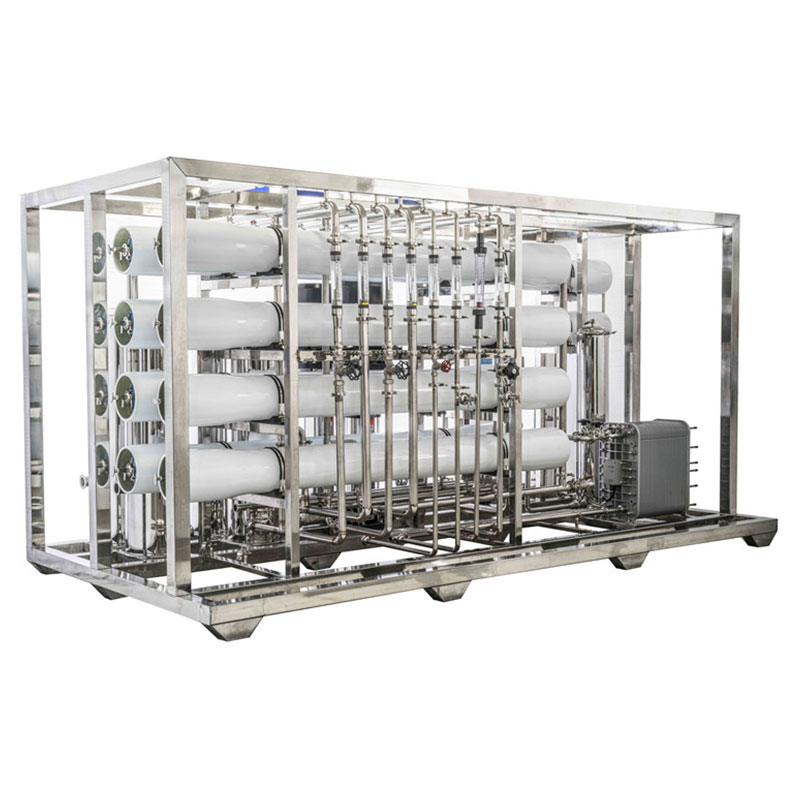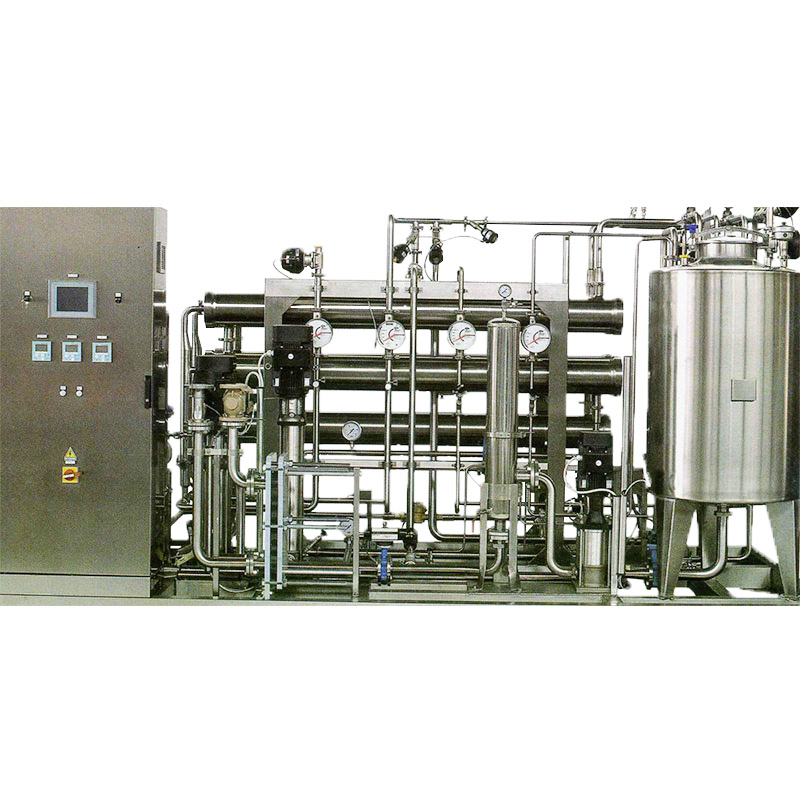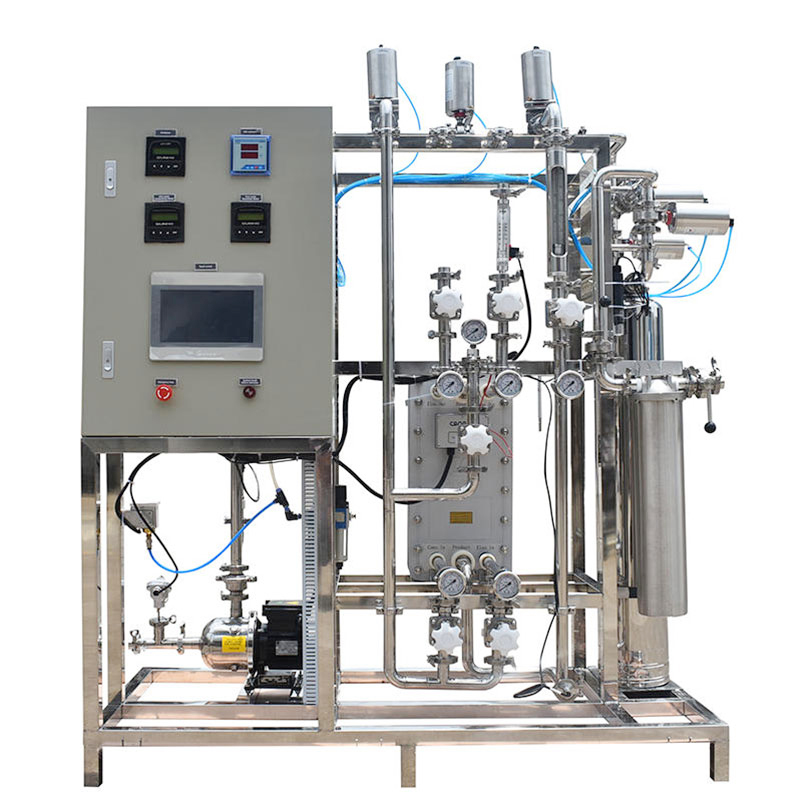


Ultra-pure Water Equipment
Compared with the traditional distillation method of ultra-pure water equipment, the ultra-pure water equipment combines the latest electric deidion (EDI) technology and has obvious advantages and advanced properties.
1. High efficiency and energy saving. There are mainly multistage distillation, high-pressure graded distillation and centrifugal purification distillation processes. All distillation methods were performed at high temperatures of 120°C, so completely sterile water was obtained. Therefore, the energy consumption in operation is considerable; since the high temperature, all equipment components must withstand high temperature impact, and the equipment cost and maintenance costs are high. Reverse osmosis technology combined with high efficiency ozone disinfection method, the whole system works at room temperature and low pressure, saving equipment investment, low operation and maintenance costs, reliable and energy saving: the operation cost of membrane treatment method is only 12-15% of the distillation method, which is very economical and competitive.
2. Stable and reliable. With the acceleration of industrialization, the discharge of large and complex waste components makes the worldwide pollution become increasingly serious, among which the pollution of water resources is more severe than before. Because the boiling point of volatile organic pollutants is mostly lower than the vaporization temperature of water, if not treated, it is easy to enter the distillation process, simple distillation method can not effectively remove it, must rely on activated carbon adsorption and other filtration methods, increase the instability of the system and water quality. The membrane process adopts multi-media filter for pretreatment; the microporous working principle of reverse osmosis membrane ensures that all large ions and molecules in water can easily remove volatile organic pollutants with larger molecular diameter, and fundamentally ensure that organic indexes meet the indexes specified in the Pharmacopoeia
Compared with the traditional distillation method of ultra-pure water equipment, the ultra-pure water equipment combines the latest electric deidion (EDI) technology and has obvious advantages and advanced properties.
1. High efficiency and energy saving. There are mainly multistage distillation, high-pressure graded distillation and centrifugal purification distillation processes. All distillation methods were performed at high temperatures of 120°C, so completely sterile water was obtained. Therefore, the energy consumption in operation is considerable; since the high temperature, all equipment components must withstand high temperature impact, and the equipment cost and maintenance costs are high. Reverse osmosis technology combined with high efficiency ozone disinfection method, the whole system works at room temperature and low pressure, saving equipment investment, low operation and maintenance costs, reliable and energy saving: the operation cost of membrane treatment method is only 12-15% of the distillation method, which is very economical and competitive.
2. Stable and reliable. With the acceleration of industrialization, the discharge of large and complex waste components makes the worldwide pollution become increasingly serious, among which the pollution of water resources is more severe than before. Because the boiling point of volatile organic pollutants is mostly lower than the vaporization temperature of water, if not treated, it is easy to enter the distillation process, simple distillation method can not effectively remove it, must rely on activated carbon adsorption and other filtration methods, increase the instability of the system and water quality. The membrane process adopts multi-media filter for pretreatment; the microporous working principle of reverse osmosis membrane ensures that all large ions and molecules in water can easily remove volatile organic pollutants with larger molecular diameter, and fundamentally ensure that organic indexes meet the indexes specified in the Pharmacopoeia





